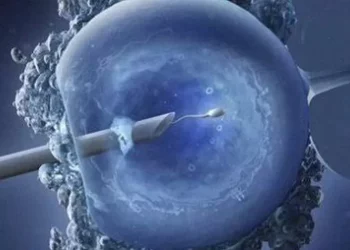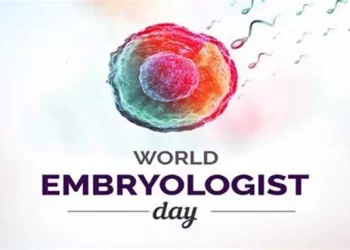Infertility, a condition affecting millions worldwide, poses significant challenges to individuals and couples striving to conceive. Defined as the inability to achieve pregnancy after a year of regular, unprotected intercourse, infertility affects approximately 10-15% of couples globally. While various factors contribute to infertility, emerging research sheds light on the role of environmental chemicals in disrupting reproductive health. Understanding how chemicals can impact fertility is crucial for addressing this complex issue.
Types of Chemicals Linked to Infertility:
Endocrine-disrupting chemicals (EDCs): EDCs are substances that interfere with the body’s endocrine system, disrupting hormonal balance and potentially affecting fertility. Common sources include certain pesticides, plastics, and industrial chemicals. Exposure to EDCs has been linked to irregular menstrual cycles, reduced sperm quality, and increased risk of reproductive disorders.
Pesticides: Widely used in agriculture to protect crops, pesticides contain chemicals that may disrupt reproductive function. Certain pesticides, such as organophosphates and atrazine, have been associated with decreased fertility, impaired sperm quality, and adverse pregnancy outcomes. Residue from pesticide-treated foods poses a potential route of exposure for individuals.
Heavy metals: Lead, mercury, cadmium, and other heavy metals are pervasive environmental contaminants with known reproductive toxicity. Exposure to these metals, often through contaminated water, food, or occupational settings, can impair fertility in both men and women. Heavy metals accumulate in the body over time, exerting harmful effects on reproductive organs and processes.
Phthalates: Phthalates are chemicals used to soften plastics and enhance the flexibility of personal care products such as cosmetics, fragrances, and lotions. These ubiquitous compounds can leach from products into the environment and enter the body through ingestion, inhalation, or dermal absorption. Research suggests that certain phthalates may disrupt hormone function, leading to reproductive abnormalities and infertility.
Bisphenol A (BPA): Found in polycarbonate plastics, epoxy resins, and thermal paper receipts, BPA is a well-known endocrine disruptor. Exposure to BPA, often through food packaging or consumer products, has been linked to altered hormone levels, impaired sperm quality, and adverse reproductive outcomes. Concerns about BPA’s reproductive toxicity have led to its phased-out use in certain products.
Mechanisms of Action:
These chemicals exert their effects on fertility through various mechanisms:
1. Hormonal disruption: EDCs, including pesticides, phthalates, and BPA, can mimic or interfere with natural hormones, disrupting the body’s endocrine balance essential for reproductive function.
2. Gonadal dysfunction: Heavy metals like lead and mercury accumulate in the ovaries and testes, impairing gamete production and fertility.
3. Oxidative stress: Exposure to certain chemicals induces oxidative damage, compromising the integrity of reproductive cells and impairing fertilization and embryo development.
Understanding these mechanisms provides insights into how chemical exposure may compromise fertility and reproductive health.
Research Findings:
Numerous studies have documented the link between chemical exposure and infertility:
1. Animal studies: Experimental research in animals has demonstrated the reproductive toxicity of various chemicals, elucidating their adverse effects on fertility, gamete quality, and reproductive organs.
2. Human studies: Epidemiological studies have reported associations between chemical exposure and infertility in humans, highlighting the potential risks posed by environmental contaminants. These studies underscore the importance of minimizing exposure to protect reproductive health.
Sources of Exposure:
Common sources of exposure to these chemicals include:
1. Food and water: Contamination of food and water supplies with pesticides, heavy metals, and plasticizers contributes to human exposure.
2. Personal care products: Phthalates and other chemicals present in cosmetics, fragrances, and toiletries can be absorbed through the skin or inhaled during use.
3. Plastic products: Bisphenols and phthalates leach from plastic containers, bottles, and packaging, contaminating food, beverages, and household items.
4. Environmental pollutants: Airborne pollutants, such as industrial emissions and vehicle exhaust, may contain hazardous chemicals that pose risks to reproductive health.
To reduce exposure, individuals can adopt measures such as choosing organic foods, using safer personal care products, and avoiding plastic containers with BPA or phthalates.
Regulatory Measures:
Regulation of these chemicals is essential for protecting public health:
1. Government regulations: Regulatory agencies implement standards and restrictions on the use of chemicals in consumer products, food, and the environment to minimize risks to human health.
2. International agreements: Global initiatives aim to address environmental pollutants and regulate hazardous chemicals through treaties and conventions promoting environmental sustainability and public health protection.
3. Advocacy and activism: Civil society organizations and advocacy groups play a crucial role in raising awareness, promoting policy changes, and holding industries accountable for chemical safety and environmental stewardship.
Efforts to strengthen regulations and promote safer alternatives are essential for mitigating the impact of chemical exposure on fertility and reproductive health.
Conclusion:
The link between chemicals and infertility underscores the importance of environmental stewardship and public health protection. By understanding the sources and mechanisms of chemical toxicity, individuals can take proactive steps to minimize exposure and safeguard fertility. Regulatory measures, coupled with advocacy efforts and consumer awareness, are critical for promoting a healthier environment and ensuring reproductive well-being for future generations. Awareness, regulation, and informed choices are key to addressing the complex interplay between chemicals and fertility, paving the way for a healthier, more sustainable future.
Related Topics:
Which Country Has the Lowest Fertility Rate: A Full Guide



























